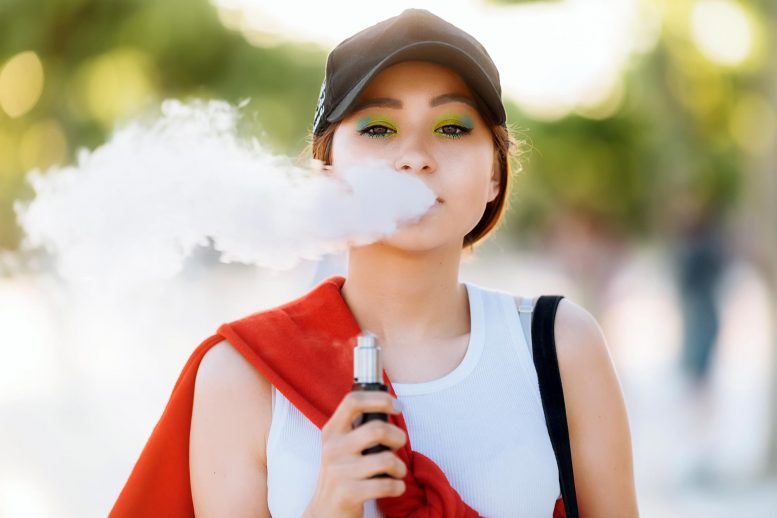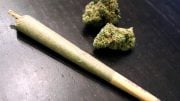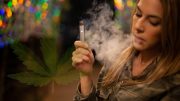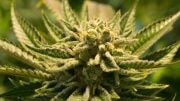
According to new research, vaping is increasing as the most popular method of cannabis delivery among all adolescents in the U.S.
Largest increases found among high-school seniors, tripling in 2 years from 5 to 14 percent.
Cannabis vaping is increasing as the most popular method of cannabis delivery among all adolescents in the United States, as is the frequency of cannabis vaping, according to research at Columbia University Mailman School of Public Health. The researchers discovered that the frequency of vaping cannabis among adolescents from all demographic groups is reported at six or more times per month, and rising faster than occasional use. Those who vape and smoke nicotine are more than 40 times more likely to vape and smoke cannabis.
Until now, time trends in vaping use had largely gone unstudied including trends in use frequency, emerging disparities, and co-occurring use of other substances, which are all critical for surveillance and programmatic public health efforts. The findings were recently published in the journal Addiction.
“Heavy and frequent use of cannabis is increasing among U.S. adolescents, and vaped systems for products for both cannabis and nicotine are growing in number so understanding the prevalence and patterns of frequent cannabis vaping is important public health information for prevention,” said Katherine Keyes, PhD, professor of epidemiology at Columbia Mailman School. “Given rising concerns about cannabis vaping in terms of safety, and potential for transition to cannabis use disorder especially at frequent levels of use, these results indicate a necessity for public health intervention and increased regulation.”
The findings are based on the U.S.-based representative annual survey, Monitoring the Future, a population of 51,052 school-attending adolescents. Schools were randomly selected and invited to participate for two years.
Past 30-day frequent cannabis use with vaping increased (2.1 percent to 5.4 percent), while occasional use with vaping rose from 1.2 to 3.5 percent from 2017 to 2019. Past 30-day frequent (3.8 to 2.1 percent) and occasional (6.9 to 4.4 percent) cannabis use without vaping declined. Certain groups, such as Hispanic/Latino or lower socioeconomic status adolescents, experienced particularly notable increases in frequent cannabis use with vaping (e.g., prevalence among Hispanic/Latino adolescents in 2017: 2.2 percent, 2019: 6.7 percent)
According to Keyes, tobacco use and e-cigarettes, as well as binge drinking, are strongly linked to frequent cannabis use –both vaping and non-vaping. The evidence indicates that young adults who use nicotine, especially through vaporizers, are more likely to subsequently use vaped cannabis.
In fact, adolescents who reported smoking and vaping nicotine on more than 10 occasions of binge drinking, were 42 times and 10 times more likely to report past 30-day cannabis use with vaping, respectively, compared to no use.
“Given that it is easier for adolescents to conceal vaping than cannabis smoking, this mode of cannabis use may facilitate more frequent use,” comments Keyes.
Prevalence increased across grades, with the largest burden among high school seniors for whom past-30-day prevalence almost tripled from 5 percent (2017) to 14 percent (2019). The one-year increase in this grade from 2018 to 2019 (7.5 percent to 14 percent) is the second largest one-year increase in any type of substance use prevalence ever tracked by Monitoring the Future.
“This persisting prevalence of daily cannabis use, which in 2020 use was higher than any year since 1981, is of further alarm for several reasons, observes Keyes. “Heavy levels of cannabis use are associated with adverse cognitive and social outcomes for youth, as well as long-term trajectories of drug use that may have adverse health and other consequences.”
Also concerning is that high levels of tetrahydrocannabinol (THC) can be delivered through vaping devices, which may lead to dangerous consequences for youth users with lower tolerance.
“In addition, of note, is the evidence that the increases we are seeing in vaping as compared with smoking are concentrated among non-Hispanic white and higher socioeconomic status adolescents, the latter possibly reflecting the higher price point for vaping devices compared with other administration methods, “noted Keyes.
“As cannabis legalization continues across U.S. states, and as products, delivery systems, potency and marketing proliferate within a for-profit industry, increased attention to youth trends, including investment in sustained and evidence-based prevention and intervention, is increasingly urgent.”
Reference: “Frequency of adolescent cannabis smoking and vaping in the United States: Trends, disparities and concurrent substance use, 2017–19” by Katherine M. Keyes, Noah T. Kreski, Hadley Ankrum, Magdalena Cerdá, Qixuan Chen, Deborah S. Hasin, Silvia S. Martins, Mark Olfson and Richard Miech, 19 May 2022, Addiction.
DOI: 10.1111/add.15912
Co-authors are Noah Kreski, Hadley Ankrum, Deborah Hasin, Silvia Martins, Mark Olfson, and Qixuan Chen, Columbia Mailman School; Magdalena Cerdá, New York University Grossman School of Medicine; and Richard Miech, University of Michigan.
The study was supported by National Center for Injury Prevention and Control, grant R49-CE003094; National Institute on Drug Abuse, grants R01DA001411, R01DA016575, R01DA037866, R01DA048853, R01DA048860.









IMHO, overdose-safe drugs (like DMT, THC, LSD, Psilocybin etc) (which are actually safer than alcohol!) legally should/must be treated same as alcohol (which is really just another (similar) kind of drug)!
IMHO, just like prohibition of alcohol had caused so much crime in the past (& that is why it was repealed many years later), prohibition of many similar drugs are causing so much crime today!
We need to take lesson from history & end “War On Drugs”!!
(Not to mention, (according to many medical research) drugs like DMT, THC, LSD, Psilocybin seem to be extremely promising against (major) depression & PTSD!)
(& what benefits alcohol or tobacco have exactly (& yet they are legal)?)